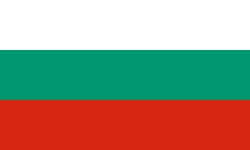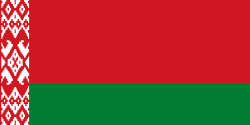Anatolij Beloglazov
| Anatolij Beloglazov | |
|---|---|
 | |
| Narození | 16. září 1956 (66 let) Kaliningrad |
| Alma mater | Kubáňská státní univerzita tělesné kultury, sportu a cestovního ruchu |
| Povolání | zápasník |
| Ocenění | medaile Řádu za zásluhy o vlast 1. třídy zasloužilý mistr sportu SSSR |
| Příbuzní | Sergej Alexejevič Beloglazov[1] (sourozenec) |
| Některá data mohou pocházet z datové položky. | |
| Přehled medailí | ||
|---|---|---|
| zlato | LOH 1980 | volný styl do 52 kg |
| Mistrovství světa v zápasu ve volném stylu | ||
| zlato | MS 1977 | papírová váha |
| zlato | MS 1978 | muší váha |
| zlato | MS 1982 | bantamová váha |
| bronz | MS 1983 | muší váha |
| Mistrovství Evropy v zápasu ve volném stylu | ||
| zlato | ME 1976 | papírová váha |
Anatolij Oleksijovič Beloglazov (ukrajinsky Анатолій Олексійович Бєлоглазов, rusky Анатолий Алексеевич Белоглазов; * 16. září 1956 Kaliningrad, Sovětský svaz) je bývalý sovětský zápasník, volnostylař. V roce 1980 na olympijských hrách v Moskvě v kategorii do 52 kg vybojoval zlatou medaili.
Jeho bratr, dvojče, je Sergej Beloglazov.
Reference
- ↑ Olympedia. 2006. Dostupné online. [cit. 2022-12-19]
Externí odkazy
 Obrázky, zvuky či videa k tématu Anatolij Beloglazov na Wikimedia Commons
Obrázky, zvuky či videa k tématu Anatolij Beloglazov na Wikimedia Commons - Anatolij Beloglazov v databázi Olympedia (anglicky)
Média použitá na této stránce
Olympic Rings without "rims" (gaps between the rings), As used, eg. in the logos of the 2008 and 2016 Olympics. The colour scheme applied here was specified in 2023 guidelines.
Olympic Rings without "rims" (gaps between the rings), As used, eg. in the logos of the 2008 and 2016 Olympics. The colour scheme applied here was specified in 2023 guidelines.
US Flag with 45 stars. In use 4 July 1896–3 July 1908. Created by jacobolus using Adobe Illustrator, and released into the public domain. This flag was used during the Spanish-American War.
US Flag with 45 stars. In use 4 July 1896–3 July 1908. Created by jacobolus using Adobe Illustrator, and released into the public domain. This flag was used during the Spanish-American War.
Finská vlajka
(c) I, Cmapm, CC BY-SA 3.0
The flag of the Soviet Union (1955-1991) using a darker shade of red.

(c) I, Cmapm, CC BY-SA 3.0
The flag of the Soviet Union (1955-1991) using a darker shade of red.

Variant version of a flag of Japan, used between January 27, 1870 and August 13, 1999 (aspect ratio 7:10).
Flag of the Socialist Federal Republic of Yugoslavia (1946-1992).
The design (blazon) is defined in Article 4 of the Constitution for the Republic of Yugoslavia (1946). [1]
Flag of the Socialist Federal Republic of Yugoslavia (1946-1992).
The design (blazon) is defined in Article 4 of the Constitution for the Republic of Yugoslavia (1946). [1]
Flag of Iran. The tricolor flag was introduced in 1906, but after the Islamic Revolution of 1979 the Arabic words 'Allahu akbar' ('God is great'), written in the Kufic script of the Qur'an and repeated 22 times, were added to the red and green strips where they border the white central strip and in the middle is the emblem of Iran (which is a stylized Persian alphabet of the Arabic word Allah ("God")).
The official ISIRI standard (translation at FotW) gives two slightly different methods of construction for the flag: a compass-and-straightedge construction used for File:Flag of Iran (official).svg, and a "simplified" construction sheet with rational numbers used for this file.
Flag of Canada introduced in 1965, using Pantone colors. This design replaced the Canadian Red Ensign design.
Georgian flag in Pantone MS.
Autor: МССУОР №1, Licence: CC BY 3.0
Russian wrestler Anatoly Beloglazov




























